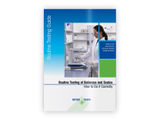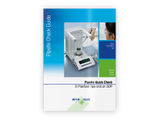To use all functions of this page, please activate cookies in your browser.
my.bionity.com
With an accout for my.bionity.com you can always see everything at a glance – and you can configure your own website and individual newsletter.
- My watch list
- My saved searches
- My saved topics
- My newsletter
Peronosporaceae
Peronosporaceae are a family of water moulds that contains 7 genera, comprising 600 species. Nested within the Peronosporaceae are the downy mildews and blue molds. Additional recommended knowledgePeronosporaceae are obligate biotrophic plant pathogens. They parasitize their host plants using the haustorial apparatus to penetrate the host's tissues. Most parasitized plants are dicots. These protists reproduce by releasing entire sporangia in the same way many species release spores. The sporangia may be referred to as conidia. Peronosporaceae of economic importance include those which have parasitic mycorrhizal relationships with grapevines. Plasmopara viticola causes a form of grape mildew. Peronospora tabacina, the "blue mold", is a saprotroph on tobacco. This species has such a delicate spore that it times its spore release for sunrise, a time of high ambient moisture and dew accumulation, so that its spores are less likely to succumb to desiccation and light. Bremia lactucae is a parasite on lettuce. References
|
||||||||||||||||||
| This article is licensed under the GNU Free Documentation License. It uses material from the Wikipedia article "Peronosporaceae". A list of authors is available in Wikipedia. |
- Rare inherited variants in previously unsuspected genes may confer significant risk for autism - New Study in Nature Genetics uses SPARK database to investigate variants that are less damaging than de novo mutations, but contribute almost as much risk
- Progenie
- ABC-Alarm
- Fisher Biosciences strengthens its reagent portfolio through acquisition of BioImage







